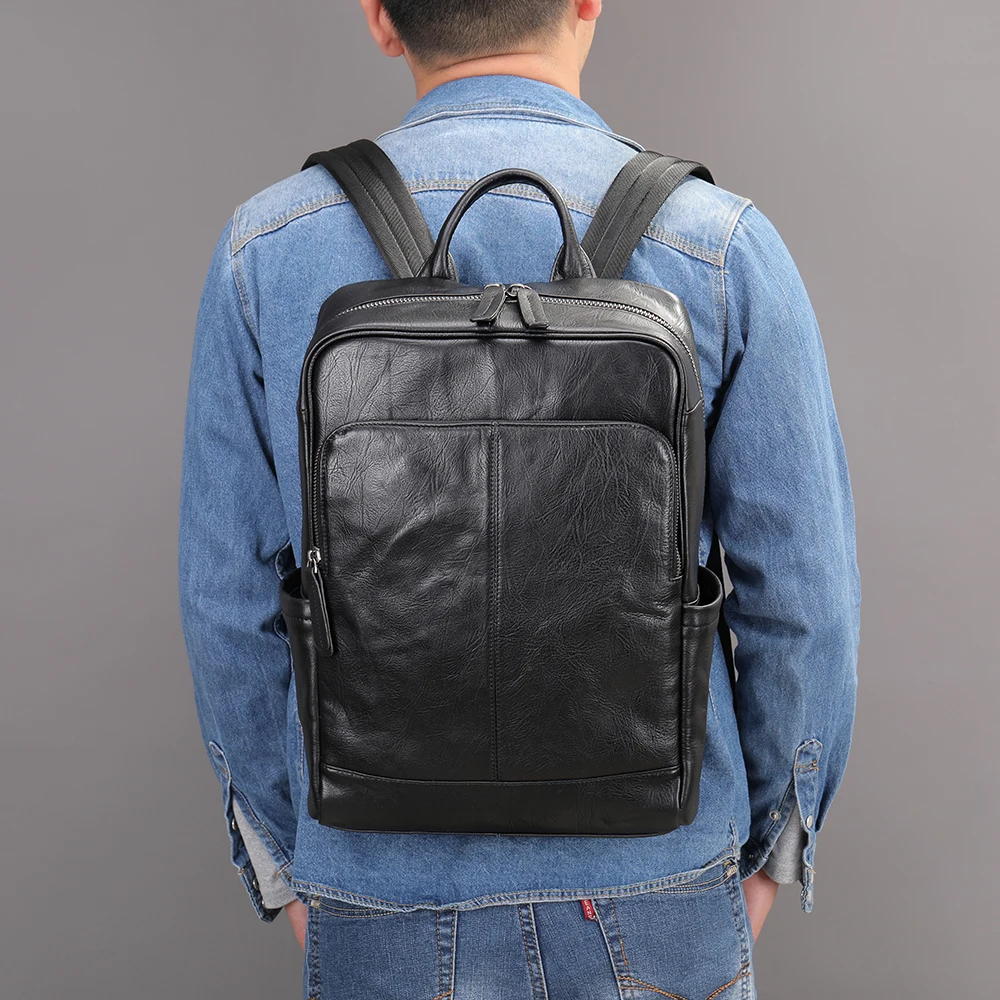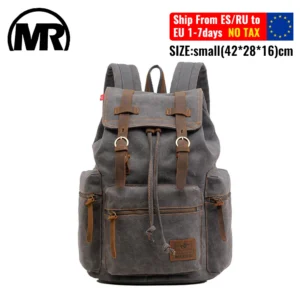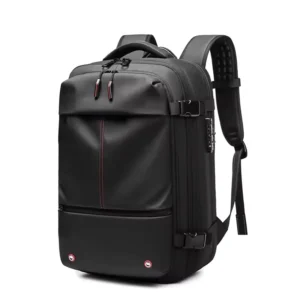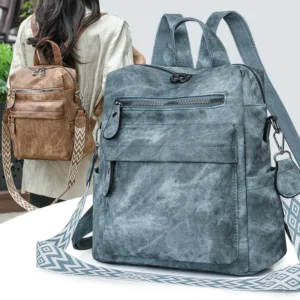Understanding Leather Types and Their Scratch Vulnerability
Leather is a remarkable material with a unique combination of durability and elegance. However, despite its strength, leather remains susceptible to scratches, especially when crafted into items we use daily like backpacks. The natural fibers that give leather its character also make it vulnerable to surface damage from regular handling and environmental exposure.
Leather backpacks face particular scratch risks due to their mobile nature. Unlike stationary leather goods, backpacks regularly encounter rough surfaces, are placed on various grounds, and experience friction against other objects. They’re constantly in motion, increasing their exposure to potential scratch hazards.
Not all leather types respond to scratches in the same way. Understanding leather types is essential for proper conditioning and waterproofing and directly impacts how you should approach scratch prevention. Some leathers show scratches more prominently, while others naturally resist or incorporate minor marks into a beautiful patina.
Leather Type Comparison Chart
| Leather Type | Scratch Resistance | Patina Development | Maintenance Level |
|---|---|---|---|
| Full-Grain | Moderate (shows scratches but develops character) | Excellent | High |
| Top-Grain | Good (more resistant to scratches) | Good | Moderate |
| Pebbled | Very Good (texture hides minor scratches) | Moderate | Moderate |
| Saffiano | Excellent (highly scratch-resistant) | Minimal | Low |
High-quality full-grain leather backpacks often develop what enthusiasts call a “patina” – a rich, character-filled appearance that incorporates minor scratches into a unique finish that tells the story of your adventures. This natural aging process transforms what might be considered imperfections into desirable character marks.
The finish applied to leather also plays a crucial role in scratch resistance. Coated leathers typically offer better protection against light scratches but may show deeper ones more dramatically. Uncoated leather shows scratches more readily but often allows them to be buffed or conditioned away with greater success.
Common Causes of Leather Backpack Scratches
Understanding what causes scratches is the first step toward preventing them. Most damage occurs during everyday use, often from sources we might not immediately consider:
Rough or abrasive surfaces: Setting your backpack on concrete, asphalt, or stone surfaces can immediately cause scratches to the bottom and sides.
Sharp objects inside the bag: Keys, metal water bottles, pens, and other everyday items can scrape against the interior, eventually wearing through to damage the outer leather.
Metal friction: Zippers, buckles, and hardware from your backpack can scratch the leather surface when the bag is folded or compressed.
Environmental factors: Excessive sun exposure dries out leather, making it brittle and more susceptible to scratches. Proper conditioning helps prevent scratches caused by environmental factors by keeping the material supple and resilient.
Improper storage: Stacking items on top of your backpack, hanging it where it rubs against walls, or storing it in cramped spaces creates pressure points that lead to creases and scratches.
Pet claws: Our furry friends don’t understand the value of premium leather and can easily leave scratches with their paws or claws.
Jewelry and accessories: Watches, rings, bracelets, and other accessories often contain hard elements that can inadvertently scratch your backpack during handling.
Identifying these common sources of damage allows you to develop targeted prevention habits. Most scratches don’t occur from single catastrophic events but rather from repeated small contacts that gradually wear away the leather surface.
Essential Protective Measures for Daily Use
Implementing a few mindful habits can dramatically reduce scratch risks during everyday use of your leather backpack. These practical techniques require minimal effort but yield significant protection benefits:
Lift, don’t drag: Always pick up your backpack completely before moving it. Dragging even slightly across surfaces is one of the most common causes of leather scratches.
Place with intention: When setting down your bag, look for clean, smooth surfaces. If you must place it on rough ground, position it on its bottom panel rather than sides or front.
Create a buffer zone: Use a small cloth or designated bag mat when placing your backpack on potentially damaging surfaces. This simple barrier prevents direct contact with abrasive elements.
Strategic packing: Organize sharp or hard items in internal pouches or dedicated compartments. This prevents them from pressing against and potentially puncturing the leather from inside.
Weight distribution: Pack heavier items toward the center of your backpack rather than the outer edges. This prevents stress and stretching that can lead to weak points susceptible to scratches.
Mind the zippers: Always fully open zippers when accessing compartments rather than forcing items through partially opened sections, which creates friction against the leather edges.
Clean hands policy: Remove rings or abrasive jewelry when handling your leather backpack, and ensure your hands are free from dirt or rough particles.
The variety of leather backpacks available today includes many designed with durability features like reinforced corners or strategic hardware placement. However, even the most thoughtfully designed leather goods benefit from conscious handling.
Remember that prevention is always more effective than treatment. These small adjustments to how you handle your backpack require little extra time but can significantly extend its pristine appearance.
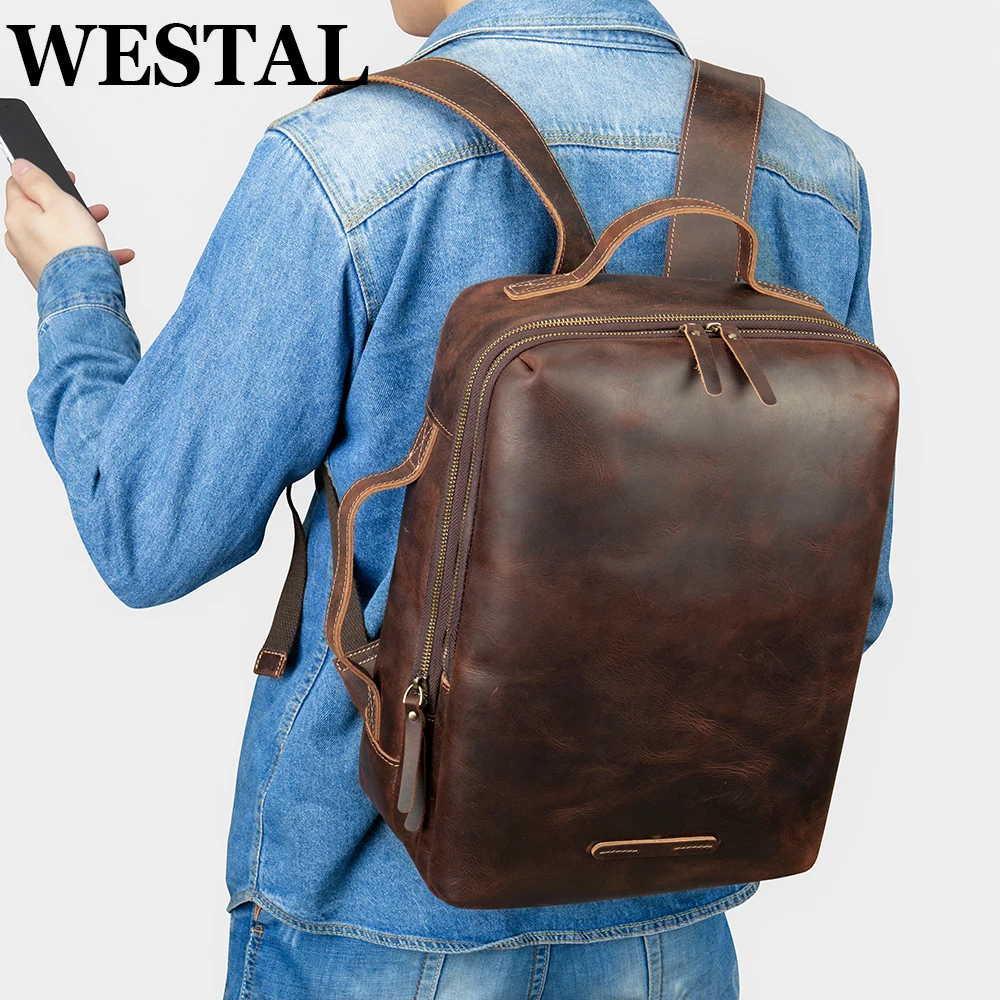
Creating a Regular Leather Care Routine
Consistent maintenance is not just about addressing existing damage—it’s about preventing scratches before they occur. A well-conditioned, properly maintained leather backpack is significantly more resistant to scratches than one that’s neglected. Establishing a simple care schedule ensures your backpack remains protected.
Daily Care (30 seconds)
- Gently wipe down with a soft, dry microfiber cloth
- Remove any visible surface dust or particles
- Check for any new marks or spots that need attention
Weekly Care (5 minutes)
- Inspect all surfaces carefully for early signs of wear
- Pay special attention to high-friction areas like handles and bottom corners
- Remove any buildup in seams or hardware areas
- Brief inspection of interior to ensure no sharp objects are loose
Monthly Care (15-20 minutes)
- Apply appropriate conditioner based on your leather type
- Test new products on an inconspicuous area first
- Allow proper absorption and drying time
- Inspect stitching and hardware for any issues
Seasonal Care (30-60 minutes)
- Deep clean with appropriate leather cleaner
- Apply thorough conditioning treatment
- Consider waterproofing as an important part of a comprehensive leather care routine
- Address any minor issues before they worsen
The key to effective leather care is consistency rather than intensity. Brief, regular attention prevents the need for major interventions later. Keep your cleaning and conditioning products together in an easily accessible location to encourage regular use.
Remember that cleaning removes abrasive particles that could cause scratches, while conditioning maintains the leather’s natural elasticity, helping it resist damage. This dual approach creates the strongest defense against everyday wear.
Selecting and Applying Leather Conditioners
Leather conditioning is perhaps the single most important step in preventing scratches. Properly conditioned leather maintains flexibility, allowing it to withstand impacts that would scratch dry, brittle leather. The right conditioner creates a protective barrier while nourishing the natural fibers.
When selecting a conditioner, consider your specific leather type. Full-grain and vegetable-tanned leathers generally benefit from natural oil-based conditioners, while finished leathers may require specialized products that won’t alter their surface treatment. Important considerations before applying conditioner to your leather backpack include ensuring the leather is clean and testing products on inconspicuous areas.
For optimal application, follow these steps:
- Begin with completely clean, dry leather
- Apply a small amount of conditioner to a soft cloth (never directly to the leather)
- Work in circular motions, applying thin, even layers
- Pay special attention to high-flex areas like straps and corners
- Allow proper absorption time (typically 15-30 minutes)
- Buff gently with a clean cloth to remove excess
- Allow 24 hours for complete absorption before heavy use
Warning signs that your leather needs conditioning include a dry appearance, stiffness when flexed, or a tendency to show scratches more easily than when new. Well-conditioned leather has a subtle sheen (not shine) and feels supple to the touch.
Conditioning frequency depends on usage and climate conditions. Backpacks used daily in dry environments might need monthly conditioning, while those in humid areas or used less frequently may need quarterly attention. Always condition before long-term storage to prevent drying.
Protective Products: Sprays, Waxes, and Balms
Beyond basic conditioning, specialized protective products create an additional barrier against scratches. These products vary in application method, protection level, and impact on leather appearance.
Water-Based Protectants
These lightweight sprays create an invisible barrier that repels water and light scratches. They’re ideal for finished leathers where maintaining the original appearance is important. Water-based protectants typically need more frequent reapplication but won’t darken or change the leather’s appearance.
Wax-Based Protectants
Waxes provide more substantial protection against scratches by creating a thicker protective layer. They’re excellent for backpacks that face rugged conditions but may slightly darken leather and require more effort to apply properly. The protection lasts longer than water-based options.
Cream and Balm Protectants
These hybrid products condition while providing moderate protection. They penetrate more deeply than sprays while being easier to apply than waxes. They offer a good balance for regular maintenance of daily-use backpacks.
For any protective product, proper application is crucial:
- Clean the leather thoroughly
- Apply in thin, even layers
- Allow complete drying between coats
- Follow product-specific curing times before exposure to elements
Most recommended protective products specifically for preventing scratches should be reapplied every 1-3 months depending on use intensity. Watch for signs of diminishing protection such as water no longer beading on the surface or increased susceptibility to light scratches.
The ideal protection regimen often combines products—a deep conditioner followed by an appropriate protective coating. This dual approach maintains leather health while creating maximum resistance to external damage.
Environmental Protection Strategies
Different environments present unique challenges for leather protection. Adapting your care routine to specific conditions significantly improves scratch resistance in any situation.
Urban Commuting
City environments expose your backpack to countless potential scratch sources from rough building surfaces to crowded transit. For urban use:
– Apply protective sprays more frequently
– Consider wax protection for bag bottoms that contact floors
– Be especially mindful of exposure to metal elements (turnstiles, railings)
– Carry a small microfiber cloth for quick cleaning throughout the day
Outdoor Adventures
Natural environments present different risks, including tree branches, rock surfaces, and varying weather conditions. For outdoor use:
– Apply heavier wax-based protectants before trips
– Consider weather-specific treatments before exposure
– Clean thoroughly after outdoor use to remove abrasive particles
– Inspect for sap or other natural substances that could damage leather
Travel Considerations
Travel backpacks designed to withstand various environmental conditions face unique challenges during transit, including luggage handling systems and storage in varied conditions:
– Apply comprehensive protection before trips
– Use protective covers during transit when not carrying
– Be particularly mindful of overhead bin surfaces and seatback contact
– Maintain conditioning during long trips if traveling through different climate zones
Seasonal Adaptations
- Winter: Focus on moisture protection and preventing salt damage
- Summer: Increase UV protection and condition more frequently in high heat
- Spring/Fall: Address transition periods with thorough cleaning and reapplication
Emergency protection measures might include carrying leather-safe wipes for unexpected spills or a compact rain cover for sudden downpours. These small preparations can prevent permanent damage from unexpected environmental exposures.
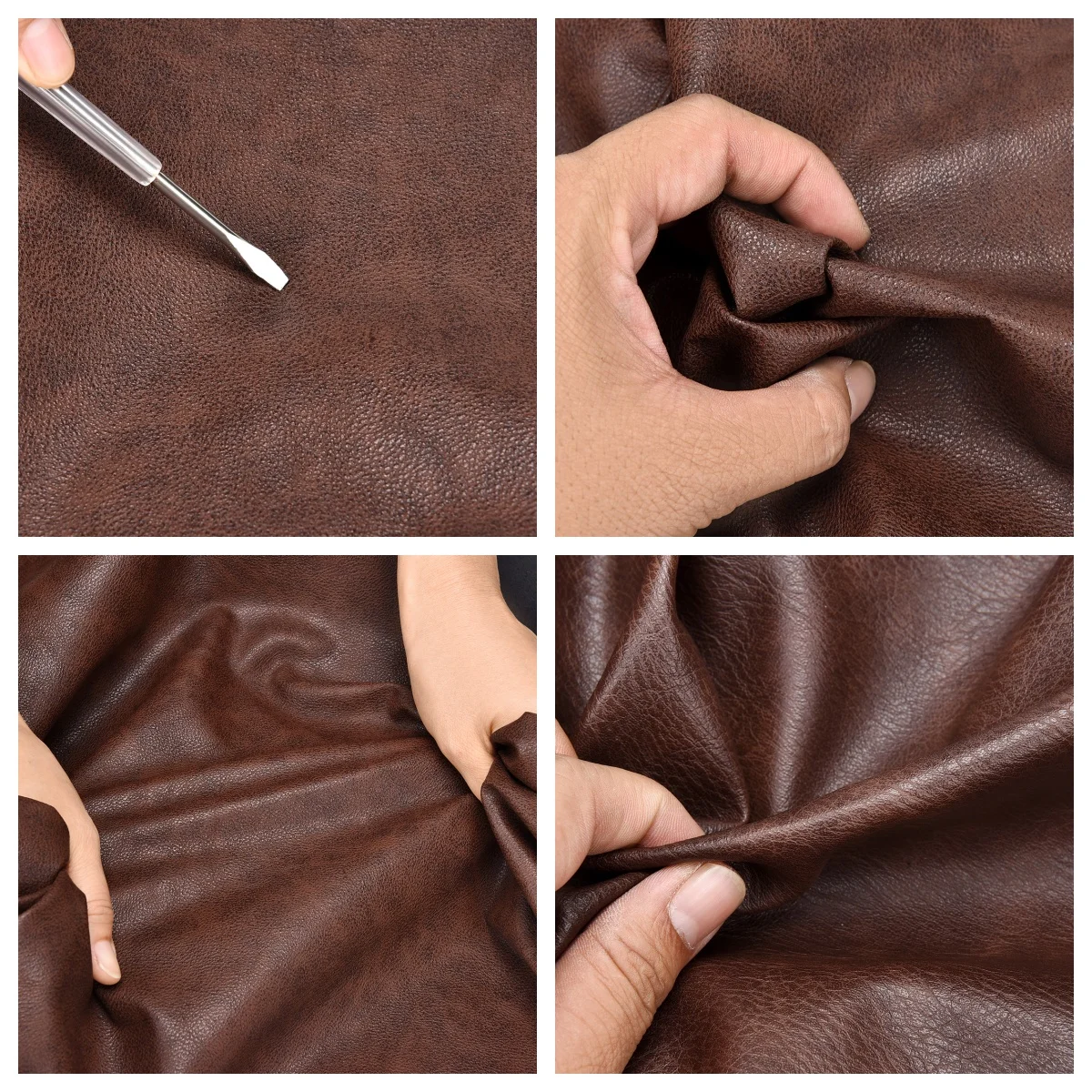
Optimal Storage for Scratch Prevention
Proper storage is often overlooked as a scratch prevention strategy, yet how you keep your backpack when not in use significantly impacts its long-term condition.
Ideal Storage Conditions
- Store upright or hanging, never under pressure or weight
- Maintain moderate humidity (40-50%) to prevent drying
- Avoid direct sunlight or heat sources which can dry and crack leather
- Ensure good air circulation around the bag
- Maintain consistent temperature (excessive heat or cold damages leather)
Shape Maintenance Techniques
- Stuff bags lightly with acid-free tissue or air-filled packing materials
- Avoid overstuffing, which creates pressure from within
- Use shaped inserts that match the bag’s natural form
- Never hang by thin straps for extended periods
Protection from Environmental Factors
- Use cotton dust bags rather than plastic which can trap moisture
- Position away from walls where friction can occur
- Keep separate from items with hardware that could scratch
- Rotate stored bags periodically to prevent pressure points
- Consider silica gel packets in humid environments
DIY care techniques for when your leather backpack is not in use can include creating your own dust bags from cotton pillowcases or crafting custom inserts from acid-free materials.
For long-term storage, conditioning before putting away is essential. This prevents the leather from drying out during extended periods of non-use. A final light application of protective spray provides additional security against dust and environmental factors.
Addressing Existing Minor Scratches
Despite best prevention efforts, scratches sometimes occur. The good news is that many minor scratches can be minimized or even eliminated with proper techniques.
Light Surface Scratches
For superficial marks that haven’t penetrated the leather’s finish:
1. Gently clean the area with a soft cloth
2. Warm the area slightly with circular finger motion
3. Apply leather conditioner sparingly
4. Allow to absorb, then buff with a microfiber cloth
5. Repeat if necessary until the scratch blends
Moderate Scratches
For scratches that have penetrated the surface but not deeply damaged the leather:
1. Clean thoroughly with appropriate leather cleaner
2. Apply a small amount of leather conditioner with fingertip
3. Work into the scratch using circular motions
4. Allow to absorb fully (overnight is best)
5. Buff gently with soft cloth
6. Apply leather cream in matching color if needed
Embracing Patina
Some scratches, particularly on full-grain leather, eventually become part of the bag’s developing character. Vintage backpacks where patina and minor scratches add character demonstrate how this aging process can enhance rather than detract from leather’s beauty. Understanding when to address a scratch versus allowing it to contribute to patina development is part of leather ownership.
When to seek professional help:
– Deep scratches that penetrate through the leather surface
– Scratches accompanied by tears or structure damage
– Scratches on specialty finished leathers
– When DIY methods have been unsuccessful after multiple attempts
Remember that each treatment of a scratch slightly alters the leather’s appearance. For best results, treat the entire panel rather than just the scratched area to maintain consistent appearance.
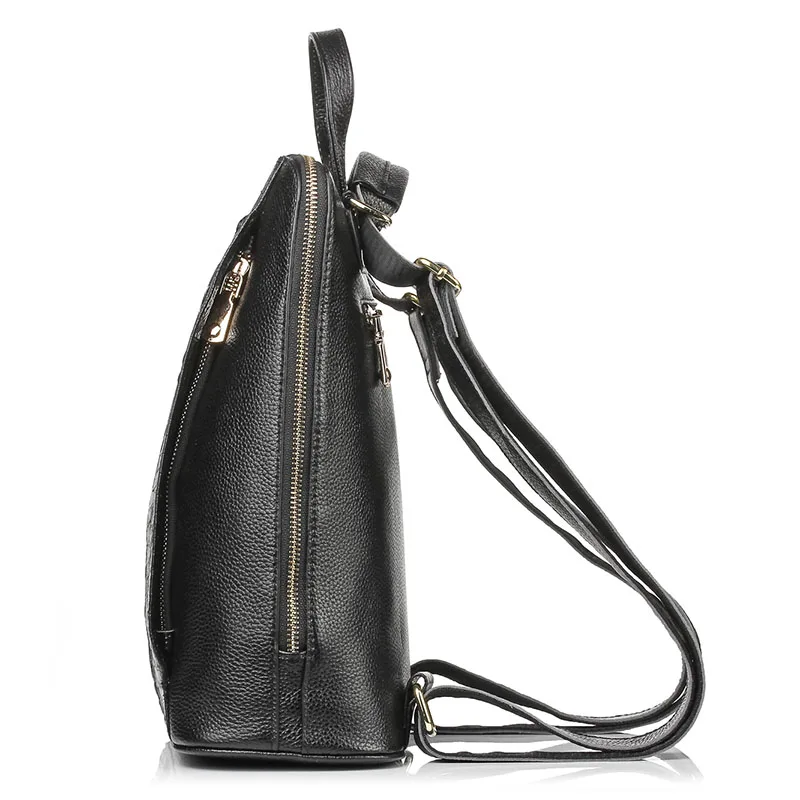
14 Inch Leather Laptop Backpack, Brown Leather Backpack, Men's Leather Backpack, Vintage Leather Backpack
Price range: $177.28 through $199.12 Select options This product has multiple variants. The options may be chosen on the product pageCarry On Leather Backpack, Roll Top Leather Backpack
Price range: $77.76 through $96.48 Select options This product has multiple variants. The options may be chosen on the product pageDesigner Mini Backpack, Mini Leather Backpack, Small Leather Sling Backpack, Women's Leather Backpack
Price range: $95.76 through $98.80 Select options This product has multiple variants. The options may be chosen on the product pageDesigner Mini Backpack, Designer Women's Backpack, Mini Leather Backpack, Women's Leather Backpack
Price range: $135.92 through $137.64 Select options This product has multiple variants. The options may be chosen on the product page17 Inch Leather Laptop Backpack, Men's Leather Travel Backpack, Men's Leather Work Backpack
Price range: $106.28 through $143.88 Select options This product has multiple variants. The options may be chosen on the product pageBlack Leather Backpack, Small Leather Backpack, Women's Leather Backpack
Price range: $112.96 through $116.12 Select options This product has multiple variants. The options may be chosen on the product page
Professional Leather Restoration Options
When scratches exceed what home care can address, professional restoration services offer specialized techniques and materials for comprehensive repair.
When to Seek Professional Help
- Deep scratches that penetrate multiple layers
- Scratches combined with structural damage
- Discoloration that hasn’t responded to home treatment
- High-value or sentimental items worth the investment
- Specialty leathers requiring expert handling
Finding Quality Restoration Services
Look for professionals who:
– Specialize specifically in leather rather than general repair shops
– Have a portfolio of before/after leather restoration work
– Use vegetable-based dyes and natural conditioners
– Offer detailed explanations of their process
– Provide clear pricing and reasonable timelines
What to Expect
Professional restoration typically involves:
– Assessment and documentation of damage
– Cleaning and preparation of damaged areas
– Rehydration of dried leather
– Color matching and application
– Protective finish application
– Detailed care instructions for future maintenance
Quality restoration isn’t inexpensive, with costs ranging from $75-$300+ depending on damage severity and backpack value. However, when compared to replacing a premium backpack, restoration often represents significant savings while preserving an item you’ve grown attached to.
Understanding the durability features when considering restoration or replacement helps determine whether professional intervention is worthwhile for your specific situation.
Frequently Asked Questions About Leather Scratch Protection
Can I use household products on my leather backpack?
While some household items like olive oil are sometimes suggested, commercial leather products are specifically formulated to prevent long-term damage. Household alternatives often cause staining, accelerated aging, or rancidity issues.
How often should I condition my leather backpack?
For backpacks used regularly, conditioning every 1-3 months is typical. However, frequency should increase in dry climates or with heavy use, and decrease in humid environments or with occasional use. The leather’s appearance provides the best guide—condition when it begins looking dry.
Are darker leather backpacks less prone to showing scratches?
Generally yes. Darker leathers have more consistent coloration throughout their depth, making surface scratches less visible. However, deep scratches can still be apparent on any color leather.
Does waterproofing automatically provide scratch protection?
Not necessarily. While some waterproofing products include scratch-resistant components, many focus solely on moisture resistance. For complete protection, use products specifically mentioning scratch resistance.
Is it normal for my leather backpack to scratch easily when new?
Fresh leather sometimes shows marks more readily until it develops some natural oils from handling and conditioning. Regular use combined with proper maintenance of your leather backpack beyond scratch prevention typically improves scratch resistance over time.
Should I treat the inside of my leather backpack?
Interior treatment depends on the construction. For backpacks with exposed leather interiors, occasional light conditioning helps prevent drying and cracking. For fabric-lined interiors, focus on keeping them clean rather than applying leather products.
Understanding the Value of Proper Leather Care
Investing time in leather care delivers returns far beyond mere appearance. A well-maintained leather backpack often lasts decades, developing character while maintaining structural integrity. This longevity makes quality leather goods more economical in the long run than repeatedly replacing lower-quality alternatives.
The environmental impact of this approach shouldn’t be overlooked. In our disposable culture, items that last represent responsible consumption. Every leather backpack that remains in use for years rather than months represents resources saved and waste avoided.
There’s also a deeply personal aspect to leather care. The rituals of maintenance create a connection between owner and item. The backpack that accompanies you through daily commutes with proper leather maintenance becomes not just a functional item but a trusted companion that tells your story through its developing patina.
Summit Carry’s leather backpacks are crafted with this philosophy in mind—that proper care transforms a purchase into an heirloom. By implementing the techniques in this guide, you’re not just preventing scratches; you’re participating in the rich tradition of leather craftsmanship that values longevity, quality, and the beauty of natural materials.
The most beautiful leather items are rarely those that remain pristine, but rather those that have been loved, used, and properly cared for—telling the story of adventures had and journeys taken, one careful conditioning at a time.
